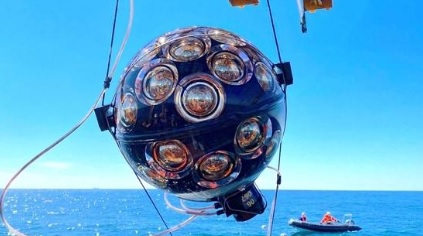Why in News
- Scientists have discovered neutrino particles under the Mediterranean Sea near Sicily (Italy).

About discovery of neutrinos in Mediterranean Sea:
- Neutrino particles have been discovered in the Mediterranean Sea by scientists under the KM3NeT (Cubic Kilometer Neutrino Telescope) project.
- The recently discovered neutrino particles are 30 times more energetic than any other neutrino particles known so far.
- These neutrinos are 10,000 times more energetic than the particles produced by the Large Hadron Collider, the world's largest and most powerful particle accelerator in Geneva.
- Scientists have identified 12 supermassive black holes at the center of distant galaxies actively devouring nearby matter as possible origin points of the neutrinos detected under the Mediterranean Sea.
- However, this neutrino can also originate from some other source.
|
Also know
KM3NeT Project
- The KM3NeT project consists of two large neutrino detectors on the floor of the Mediterranean Sea. These detectors are still under construction and have not reached their full capacity.
- A detector called ARCA (Astroparticle Research with Cosmics in the Abyss) is located at a depth of 3.4 km near Sicily, which is designed to detect high-energy neutrinos.
- A detector called ORCA (Oscillation Research with Cosmics in the Abyss) is located at a depth of 2.4 km near Provence, France, which is designed to detect low-energy neutrinos.
|
About Neutrinos:
- Small subatomic particles are called neutrinos.
- Neutrinos were first discovered in 2013.
- They are produced by the interaction of protons (subatomic particles) and nuclear energy (atoms).
- There are three types of neutrinos: Electron, Muon and Tau.
Key features:
- They are chargeless and massless particles that are produced from cosmic ray sources.
- They help in detecting cosmic ray sources.
- These particles can pass through any matter in space like stars, planets etc. without any hindrance.
- These particles are also known by the nickname "Ghost Particles".


